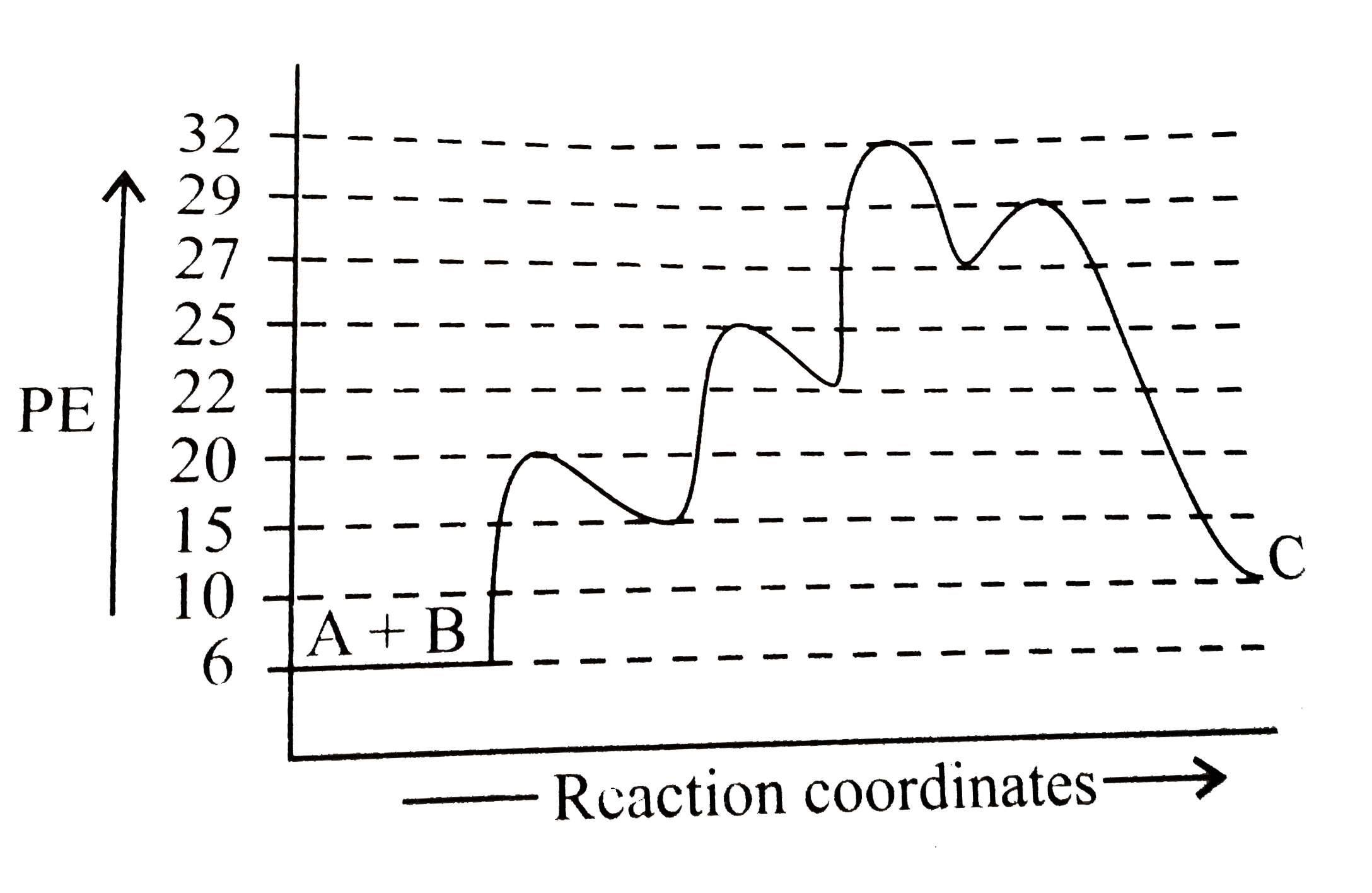A hypothetical reaction, A→2B proceeds through following sequence of steps
A→C,ΔH=a
C→D,ΔH=b
12D→B:ΔH=c
The heat of reaction is :
a−b+2c1
a+b−2c
a+b+2c
a+2b+2c
The correct Answer is:C
(i)+(ii)+2×(iii) gives the required result.
Topper's Solved these Questions
- Chemical Thermodynamics & EnergeticsBOOK - NIKITA PUBLICATIONCHAPTER - Chemical Thermodynamics & EnergeticsEXERCISE - QUESTION FROM COMPETITIVE EXAM
35 Videos
- CHEMICAL KINETICS BOOK - NIKITA PUBLICATIONCHAPTER - CHEMICAL KINETICS EXERCISE - MCQs
351 Videos
- CHEMISTRY IN EVERYDAY LIFE BOOK - NIKITA PUBLICATIONCHAPTER - CHEMISTRY IN EVERYDAY LIFE EXERCISE - MCQs
224 Videos
Similar Questions
Knowledge Check
From the thermochemical reactions, C(graphite)+1/2O2→CO,ΔH=−110.5 KJ
CO+1/2O2→CO2,ΔH=−283.2 KJ the heat of reaction of C(graphite) +O2→CO2 is :A393.7 KJB−393.7 KJC−172.7 KJD+172.7 KJStudy the following therochemical equations:
A−−→BΔH=+100KcalB−−→CΔH=−80Kcal
The correct order of enthapies of formation of A, B and C isAA<B<CBA<C<BCC<A<BDB<C<AFor the reaction, A(s)+3B(g)→4C(g)+d(l)ΔHandΔU are related as :
AΔH=ΔUBΔH=ΔU+3RTCΔH=ΔU+RTDΔH=ΔU−3RT
On the basis of given reactions,the correct order of increasing oxidising of A,B,C & D is. [(a)A−+B→A+B− , (b) C+D−→noreaction , (c) C−+B→noreaction, (d) D+A−→D−+A]
View SolutionComplete the following reactions
(a)XeF4+H2O→
(b )XeF6+H2→
(c)XeF6+H2O→
(d)XeF6+NH3→
View SolutionIdentify (A) to (G) in the following scheme and name the process.
CaCO3Δ−−→(A)+(B)gas,(A)+H2O→(C)
(C)+B→CaCO3+H2O(D)+(C)Δ−−→(E)gas
(E)+H2O+(B)→(F),NaCI+(F)→(G)+(D)
(G)Δ−−→Na3CO3+H2O+(B)
View SolutionIdentify (A) to (G) in the following scheme and name the process.
CaCO3Δ−−→(A)+(B)gas,(A)+H2O→(C)
(C)+B→CaCO3+H2O(D)+(C)Δ−−→(E)gas
(E)+H2O+(B)→(F),NaCI+(F)→(G)+(D)
(G)Δ−−→Na3CO3+H2O+(B)
View SolutionWhat is ΔH for the reaction A+B→C where the mechanism involves several kinetics steps.

View Solution
